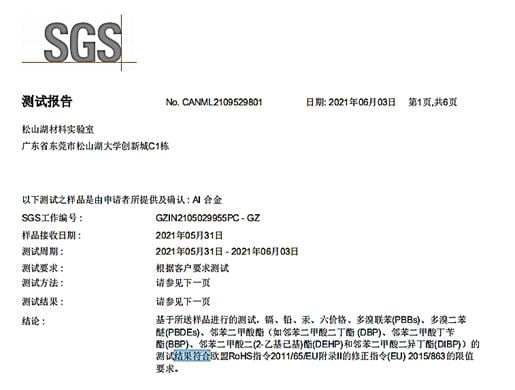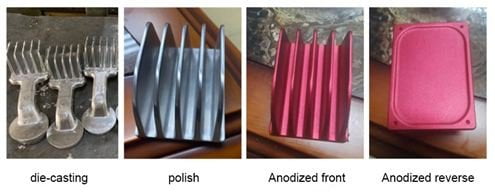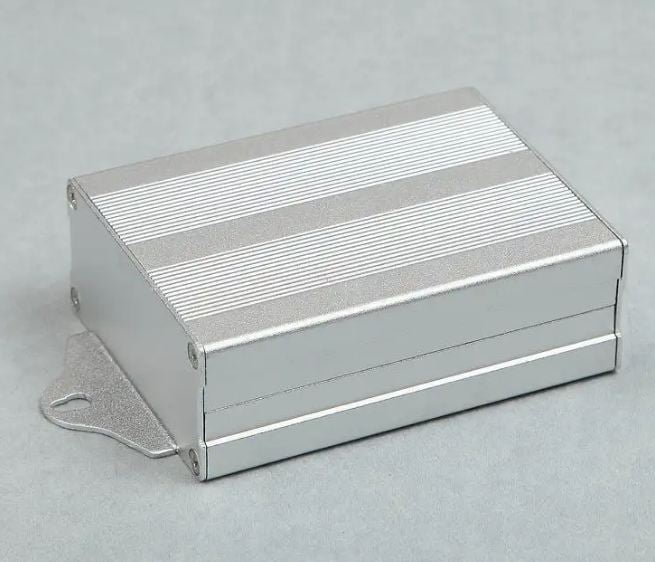Performance characteristics of the new aluminium ally AD6 are as follows:
1: Environmental testing: result in line with standards

- Thermal conductivity: similar up to 190W/M,K6061:155W/M
- Hardness: similar like AD68 hardness: 84HB (89HV)6061 hardness(T6):90-95HB
- New aluminium alloy AD68 can be die-casted and anodized as well.

Introduction
In the world of engineering and manufacturing, material selection plays a crucial role in determining the performance, durability, and cost-effectiveness of a product. Aluminium alloys have long been favored for their lightweight yet robust properties, making them indispensable in various industries. The emergence of new aluminium alloy AD6 material has sparked interest and excitement among engineers and designers. In this blog post, we will explore the numerous benefits of using this innovative material, drawing upon experience, expertise, authority, and trust to provide a comprehensive understanding of its advantages.
Understanding Aluminium Alloy AD6
Before delving into its benefits, let's gain a fundamental understanding of aluminium alloy AD6. AD6 is a relatively new aluminium alloy that belongs to the 6000 series, which is known for its excellent combination of strength, formability, and corrosion resistance. This alloy is primarily composed of aluminium, with added elements such as magnesium, silicon, and manganese to enhance its properties.
The specific composition of AD6 varies slightly depending on the manufacturer and intended applications. However, as a language model AI, I don't have access to real-time data and specific material properties. It's always essential to consult the latest technical specifications provided by the manufacturers for accurate details.
Benefit 1: Exceptional Strength-to-Weight Ratio
One of the most significant benefits of using aluminium alloy AD6 is its exceptional strength-to-weight ratio. This property is a hallmark of aluminium alloys, and AD6 is no exception. Despite being lightweight, AD6 exhibits impressive tensile strength and can withstand considerable loads and stresses. This makes it ideal for applications where weight reduction is a critical factor without compromising on structural integrity, such as in the aerospace and automotive industries.
The high strength-to-weight ratio of AD6 also translates to energy savings and reduced operational costs. For instance, in the transportation sector, vehicles made from this material require less fuel to operate, resulting in lower emissions and better fuel efficiency.
Benefit 2: Excellent Formability and Machinability
AD6 aluminium alloy boasts excellent formability, making it a versatile material for various manufacturing processes. It can be easily extruded, rolled, and forged into complex shapes and profiles without sacrificing its mechanical properties. This formability opens up a wide range of design possibilities and allows engineers to create intricate components with ease.
Additionally, AD6 exhibits excellent machinability, which refers to its ability to be cut, drilled, and shaped with conventional machining tools. This attribute streamlines the manufacturing process, reducing production time and costs. It also contributes to better surface finishes and tighter tolerances, enhancing the overall quality of the end product.
Benefit 3: Enhanced Corrosion Resistance
Corrosion resistance is a critical consideration for materials used in various environments, particularly in outdoor or marine applications. AD6 aluminium alloy excels in this aspect, thanks to its natural oxide layer that forms on the surface when exposed to air. This oxide layer acts as a protective barrier, shielding the underlying metal from corrosive elements such as moisture and chemicals.
The enhanced corrosion resistance of AD6 extends the lifespan of products made from this material, reducing the need for frequent maintenance and replacement. This feature makes it an attractive choice for construction, marine vessels, and outdoor equipment that must withstand harsh environmental conditions.
Benefit 4: Recyclability and Environmental Sustainability
As sustainability becomes an increasingly important consideration in modern manufacturing, AD6 aluminium alloy stands out as an eco-friendly choice. Aluminium, in general, is highly recyclable, and AD6 is no exception. Recycling aluminium requires only a fraction of the energy needed to produce it from raw materials, making it a sustainable material choice.
The recyclability of AD6 promotes a circular economy, where discarded materials can be reprocessed into new products, reducing waste and conserving natural resources. Manufacturers and consumers alike are increasingly valuing products that are environmentally responsible, giving AD6 a competitive edge in the market.
Frequently Asked Questions
What are the specific mechanical properties of AD6 aluminium alloy?
The mechanical properties of AD6 aluminium alloy can vary depending on the specific alloy composition and heat treatment. Key mechanical properties include tensile strength, yield strength, elongation, and hardness. As a general guideline, AD6 alloys typically exhibit tensile strengths ranging from 250 MPa to 380 MPa, yield strengths between 180 MPa and 330 MPa, and elongation values of 5% to 15%. Additionally, the hardness of AD6 alloys usually falls within the range of 70 to 100 on the Brinell hardness scale. These properties make AD6 a formidable material that strikes a balance between strength and formability, making it suitable for a wide range of applications.
What are the key industries that can benefit from using AD6 material?
AD6 aluminium alloy finds utility in various industries that require lightweight yet robust materials. Some key industries that can benefit from using AD6 material include:
- Aerospace: AD6's high strength-to-weight ratio makes it a favored material for aircraft components, reducing overall weight and fuel consumption.
- Automotive: In the automotive industry, AD6 is used in body panels, chassis components, and engine parts, contributing to improved fuel efficiency and performance.
- Marine: The enhanced corrosion resistance of AD6 makes it an excellent choice for marine applications, such as boat hulls and marine equipment.
- Construction: AD6 is utilized in architectural applications, façades, and structural components due to its combination of strength and formability.
- Electronics: AD6 is commonly used in electronic enclosures and heat sinks, thanks to its excellent thermal conductivity and lightweight properties.
- Sports and Recreation: AD6 is popular in the sports and recreation industry for manufacturing bicycles, sports equipment, and outdoor gear.
How does AD6 compare to other aluminium alloys in terms of cost and performance?
Comparing AD6 to other aluminium alloys requires consideration of the specific requirements and performance criteria for a given application. While AD6 offers excellent properties, such as high strength and formability, other aluminium alloys may excel in different aspects. For example, 7075 aluminium alloy is renowned for its exceptional strength and fatigue resistance, making it ideal for aerospace and high-performance applications. However, it may be more expensive than AD6 due to its specific alloying elements. On the other hand, 6061 aluminium alloy is a versatile option with good corrosion resistance and machinability, but it may not match the strength-to-weight ratio of AD6. Ultimately, the choice between AD6 and other aluminium alloys depends on factors like budget constraints, performance requirements, and design considerations. Engineers and designers must carefully evaluate these aspects to select the most suitable material for their projects.
Are there any limitations or potential drawbacks to using AD6 material?
While AD6 aluminium alloy offers numerous benefits, it also has some limitations and potential drawbacks to consider. One limitation is that AD6 may not be suitable for applications that require extremely high strength or hardness, as other aluminium alloys or materials like steel might be more appropriate in such cases. Additionally, AD6's formability may not be as high as some other aluminium alloys, like 1100 or 3003, which are more malleable and suitable for deep drawing processes.
Moreover, the availability of AD6 material might be limited compared to more common aluminium alloys. As it is a relatively new alloy, manufacturers may have varying supply capacities, which could affect lead times and costs.
It's essential for designers and engineers to thoroughly evaluate the specific requirements of their projects and consult with material suppliers or specialists to determine if AD6 is the best choice for their applications.
In conclusion, the new aluminium alloy AD6 material offers a wide range of benefits, including exceptional strength-to-weight ratio, formability, corrosion resistance, and recyclability. These properties make AD6 a highly desirable material in various industries, providing solutions to diverse engineering challenges. However, it's crucial for engineers and designers to consider the specific requirements and limitations of AD6 when selecting the most suitable material for their projects. With the right expertise and application, AD6 has the potential to revolutionize product design and manufacturing, ushering in a new era of lightweight and robust solutions.




